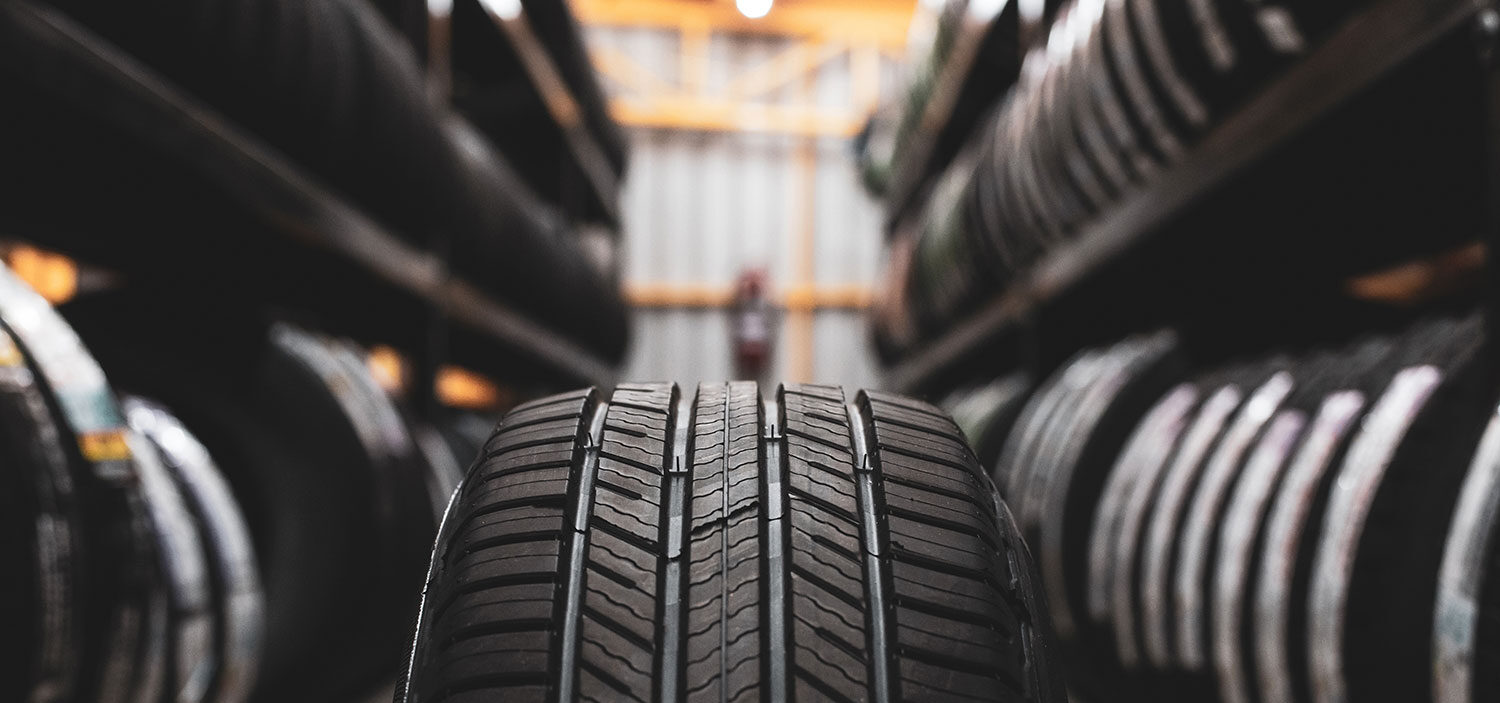Understanding Tire-Tread Wear Patterns
September 2, 2025
Your tires play a big role in how your vehicle feels and drives, affecting everything from grip and handling to comfort of the ride. When it comes to vehicle maintenance, tires can be a costly item to replace. If they are well-maintained, tires can last a long time. Tire maintenance is directly related to overall vehicle maintenance. When your vehicle is suffering from maintenance issues, you can usually see it in the tires. Signs can range from subtle changes in your vehicle’s handling to visible wear patterns on your tires. Each sign has a story to tell.
Anything other than even tire wear can indicate an issue with other vehicle components or maintenance (and maybe an issue with driving style). Let’s cover some common tire-tread wear patterns that can help you diagnose a possible issue with your vehicle. It’ll give you the information needed to better communicate with a mechanic.
Wear In The Middle
Tire wear in the middle of your tire often points to overinflation of the tire itself. When the tire is overinflated, it bulges from the center of the tire tread outward. This creates a convex shape that contacts the road more in the middle. As a result, the center tread wears faster. When inflating tires, always follow the recommended pressure range outlined on the tire sidewall, your car’s door placard or the owner’s manual. These tire pressures have been designed and tested specifically for that tire. Before inflating, always check that the tire code matches the recommended tire listed in your owner’s manual or tire placard to ensure you have the proper information. Check your tire pressures periodically because they may also change as outdoor temperatures fluctuate.
Wear On The Sides
Uneven tire wear appearing on the sides of your tire tread points to underinflation of the tires. Because the structure of a tire is stiffer as it transitions from tire tread to sidewall, this section of the tire will have the most contact pressure with the road when a tire is underinflated. To avoid excessive uneven wear, ensure that your tires are inflated within the proper range as specified on the tire sidewall, your vehicle’s door placard or the owner’s manual. In addition to causing uneven tire wear on the sides, underinflated tires can also increase rolling resistance. This can lead to reduced fuel efficiency and warmer tires, which can lead to tire failure.
Sporadic Tire Wear
Tires that are showing signs of sporadic or patchy tire wear could indicate a variety of different maintenance issues with the vehicle. Factors could include improper tire inflation, misalignment of the tires, vehicle suspension issues or rough driving practices. The most likely cause of sporadic tire wear is improper tire balance. When a tire is improperly balanced, you can feel it in the overall ride of the car and (in many cases) as feedback in the steering wheel. An improperly balanced tire rotating at high speeds is essentially bouncing along the roadway as it rotates. The “heavier” side of the tire lifts the rubber off the pavement as it rotates up and slams it back down as it rotates down. The tire touches the road in a different spot with each rotation. This causes high-pressure contact with the road and allows the tire to wear unevenly.
Tires can become unbalanced for many different reasons, including damage to the tire itself, damage to the rim or the loss of wheel balancing weights due to disbonding of the adhesive. Unbalanced wheels can cause minimal vibrations to start. Over time, they can lead to premature wear on the tires and other vehicle components (such as shocks, struts and bearings).
Feather-Edge Wear
Feather-edge wear on a vehicle tire presents itself as a smooth, rounded edge on one side of the tire tread and an angled, ramp-like appearance on the other. Feather-edge wear that is present on a tire (or multiple tires) tells you that your vehicle’s wheels are misaligned. This specific pattern is often caused by an incorrect toe setting where the tires are angled slightly inward or outward. This issue causes them to scrub or drag against the road as you drive. Proper tire alignment and consistent tire rotations are the best ways to prevent uneven tire wear and feather-edge wear.
Even Tire Wear
Even-looking tire wear across your vehicle’s tire treads is exactly what you want to see. It shows that your car or truck has properly inflated and aligned tires. The vehicle likely does not have issues with suspension or steering components. While even tire wear indicates an overall healthy vehicle, tread depth is another factor to keep in mind. As tough as tires are, they don’t last forever. The rubber compound of your tires naturally wears as you drive, giving you anywhere from 40,000 to 60,000 miles worth of driving on a properly maintained tire. When your tread depth nears the recommended minimums, it’s best to head to Chabill’s Tire and Auto Service for a new set. Our technicians can recommend tire types and brands that best fit your driving style. They can keep an eye on tread depth with every tire rotation to ensure you have enough grip to drive safely.
How Can Chabill’s Help?
The staff and technicians at Chabill’s Tire and Auto Service are experts when it comes to vehicle tires and diagnosing issues with your car or truck. We always recommend regular maintenance and inspection of your vehicle, as well as consistent tire rotation to ensure even tire wear all around. Performing regular visual inspections on your car is a great way to stay ahead of maintenance issues. This preventive step helps your vehicle components last longer and prevents costly repairs by addressing smaller issues early.
